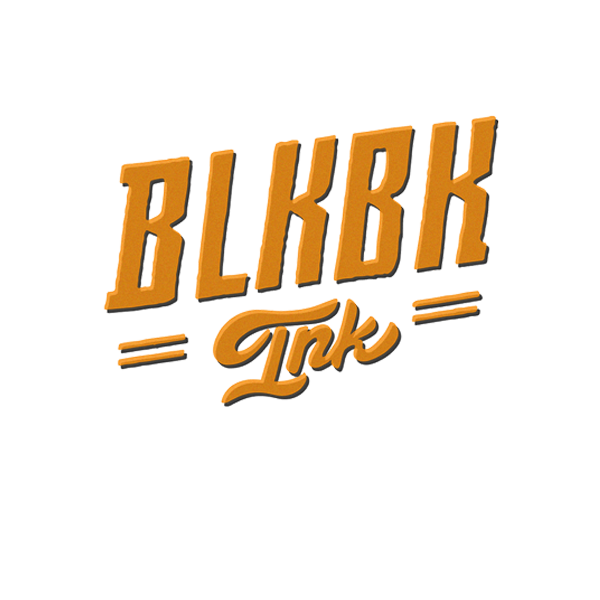An introduction to typographical history and all that makes BLKBK great
As typographers of the Latin alphabet, BLKBK reimagines forms thousands of years old. Every time brush hits paper, we draw on legacies and traditions older than papyrus, fusing the methods of ancient script-writing with contemporary styles and modern technology to create new fonts.

In the pantheon of great technologies, the written word stands with the greatest: the wheel, mathematics, and mastery of fire. As a tool necessary for both the maintenance and growth of civilizations, writing has closely tracked their rise and fall. Whether in the form of cuneiform—recording Sumerian production surpluses and therefore enabling trade—or in the form of code that connects people across the great civilizations that today span the globe, the utility presented by the ability to transmit ideas from one to many appears limitless.
But pushing that limit is not BLKBK’s concern. Yes, BLKBK participates in the bleeding edge of typographical technology: creating, digitizing, and digitally disseminating fonts that are capable of reaching billions. But we measure communication not only by how far it reaches, but by the breadth and depth of its connections. Staying true to our core insight that letters convey meaning before they forms words, means mining the history of the written word and beyond, picking from sources primitive and personal everywhere along the spectrum between social behaviour and social media.
At the personal end of this communication spectrum lie all kinds of prelinguistic communication—raw sensory information deliberately transmitted from one living thing to another. For example, the feel of a hand against your cheek says everything, whether it’s a caress or a slap. Each of these exact exchanges are once in a lifetime experiences, incommunicable to others except through oblique means like narrative or analogy—the first, low-tech steps towards blasting information to billions.

The unfortunate thing is, steps towards greater communicative reach have usually come at the cost of personality. Ten thousand years ago, we silenced the timbre of our voices when we committed our thoughts to visual record. The trade ensured that words would last longer than memories and travel further than the wind could carry a shout, but robbed our stories of a live narrator’s crackling emotion. Over the course of the middle ages, European civilization made long strides in perfecting clear, mass-produced text, but mortgaged the distinctive look and style of individual hands. Today, we surrender writing style to algorithms that finish our sentences, favouring search engine optimization over reading pleasure.

That’s the legacy of type. But it’s not an inevitability. In order to roll back history and reclaim lost personality, we don’t need to eliminate the best parts of the technology that took us here, we just need to pick up the pieces we dropped along the way. Participating in the legacy of type means understanding the evolution of that technology—from the foundations of the Latin alphabet in the classical era, through the development of font, to the handstyles of the late 20th century—and bringing back personality, style, and individuality.
